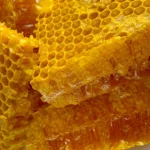- 0 Comments
- admin
Bees in America- What you should know

The United States is home to a diverse array of bee species, with estimates varying depending on the source and the definition of what constitutes a “bee species.” However, it’s generally accepted that there are several thousand species of bees in the United States.
For example, according to the United States Geological Survey (USGS), there are approximately 4,000 species of native bees in North America, including the United States and Canada. However, other estimates suggest there could be even more, with some researchers suggesting there may be 3,600 species of bees in the continental United States alone.
These numbers include a wide range of bee species, from well-known honey bees and bumblebees to numerous species of solitary bees, such as mason bees, carpenter bees, mining bees, and sweat bees. Each of these species plays a unique role in pollination and ecosystem health.
How Long Do Bees Live?
The lifespan of a bee varies depending on its role within the colony and the species. Here’s a breakdown:
Queen Bee: The queen bee has the longest lifespan within the colony, typically ranging from one to three years, although some queens have been known to live longer. The queen’s primary role is to lay eggs, and she is cared for by worker bees throughout her life.
Worker Bees: Worker bees, which are non-reproductive females, have the shortest lifespan among the castes. Their lifespan varies depending on factors such as the time of year, environmental conditions, and workload. During the summer months when they are most active, worker bees typically live for about six weeks. However, those born in the autumn may live several months through the winter, as they are needed to help maintain the hive.
Drone Bees: Drones are male bees whose sole purpose is to mate with a queen. Their lifespan is relatively short, usually around one to two months. Drones are typically expelled from the hive during the autumn months when they are no longer needed for mating.
Solitary Bees: The lifespan of solitary bee species varies widely, with some species living only a few weeks as adults, while others may live several months. Since solitary bees do not live in colonies, their lifespan is primarily focused on finding mates and providing for offspring.
Overall, the lifespan of a bee is influenced by various factors, including genetics, environmental conditions, and the demands of their role within the colony.
What Are threats to US Bees?
The dangers facing bees today are multifaceted and concerning. Here are some of the main threats:
- Pesticides: The use of pesticides, particularly neonicotinoids, poses a significant risk to bee populations. These chemicals can interfere with bee navigation, foraging behavior, and overall health, contributing to colony collapse disorder (CCD) and population declines.
- Habitat Loss: Urbanization, agricultural expansion, and deforestation are all leading to the loss of bee habitats. Bees rely on diverse landscapes with a variety of flowering plants for food and nesting sites. As these habitats disappear, bee populations suffer.
- Climate Change: Shifts in climate patterns can disrupt the timing of flowering plants, leading to a mismatch between when bees emerge and when food sources are available. Extreme weather events such as droughts and floods can also directly impact bee populations.
- Disease and Parasites: Bees are susceptible to various diseases and parasites, including varroa mites and Nosema. These pests can weaken bee colonies and make them more vulnerable to other stressors.
- Monoculture Farming: Large-scale agriculture often relies on monoculture crops, which provide limited nutrition for bees and reduce the diversity of their diet. This can weaken bee colonies and make them more susceptible to other threats.
- Invasive Species: Invasive species can outcompete native plants, reducing the availability of food sources for bees. Additionally, invasive species such as the Asian giant hornet pose a direct threat to bee colonies.
Addressing these threats requires a multifaceted approach involving policy changes, conservation efforts, sustainable agricultural practices, and public awareness campaigns. Protecting bees is not only crucial for their survival but also for the health of ecosystems and food security.
Conclusion-
Whether you fear them or not, bees play a major role in the entire world ecosystem-not just the US.
It is up to us as a human species to do whatever we can to protect them. They our our live stream when it comes to pollination and cross pollination of plant. They are the reason we see the plants across the world that we see today.

